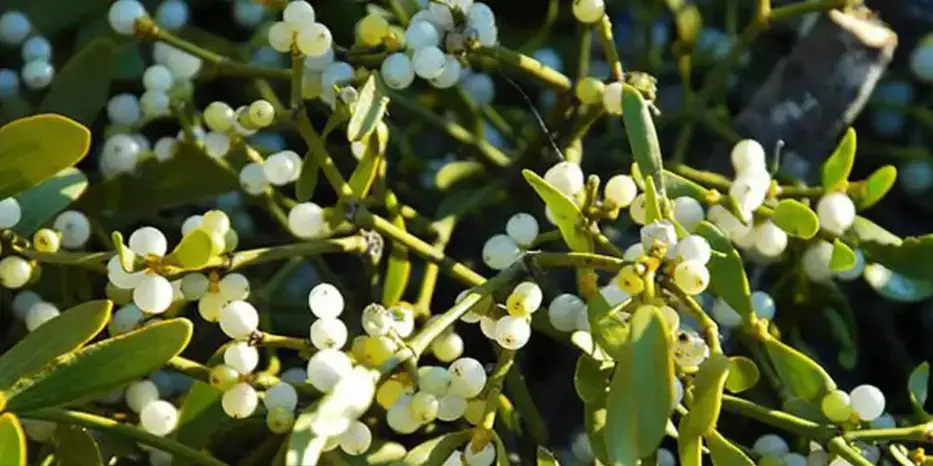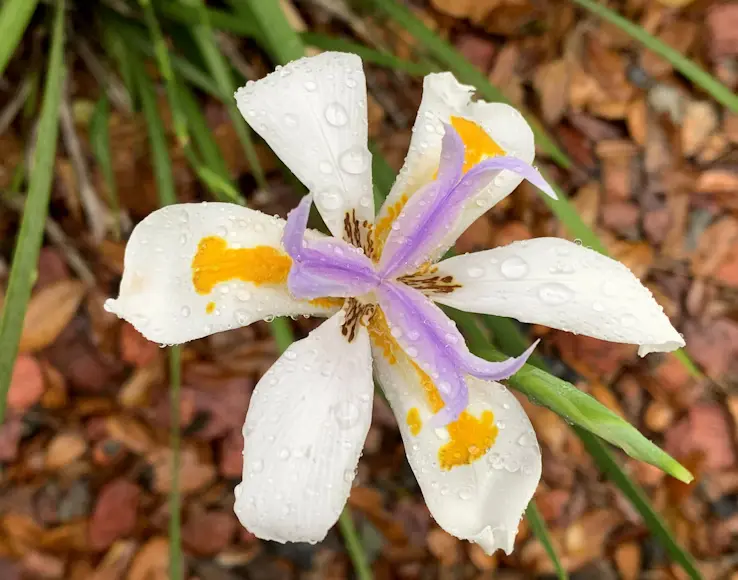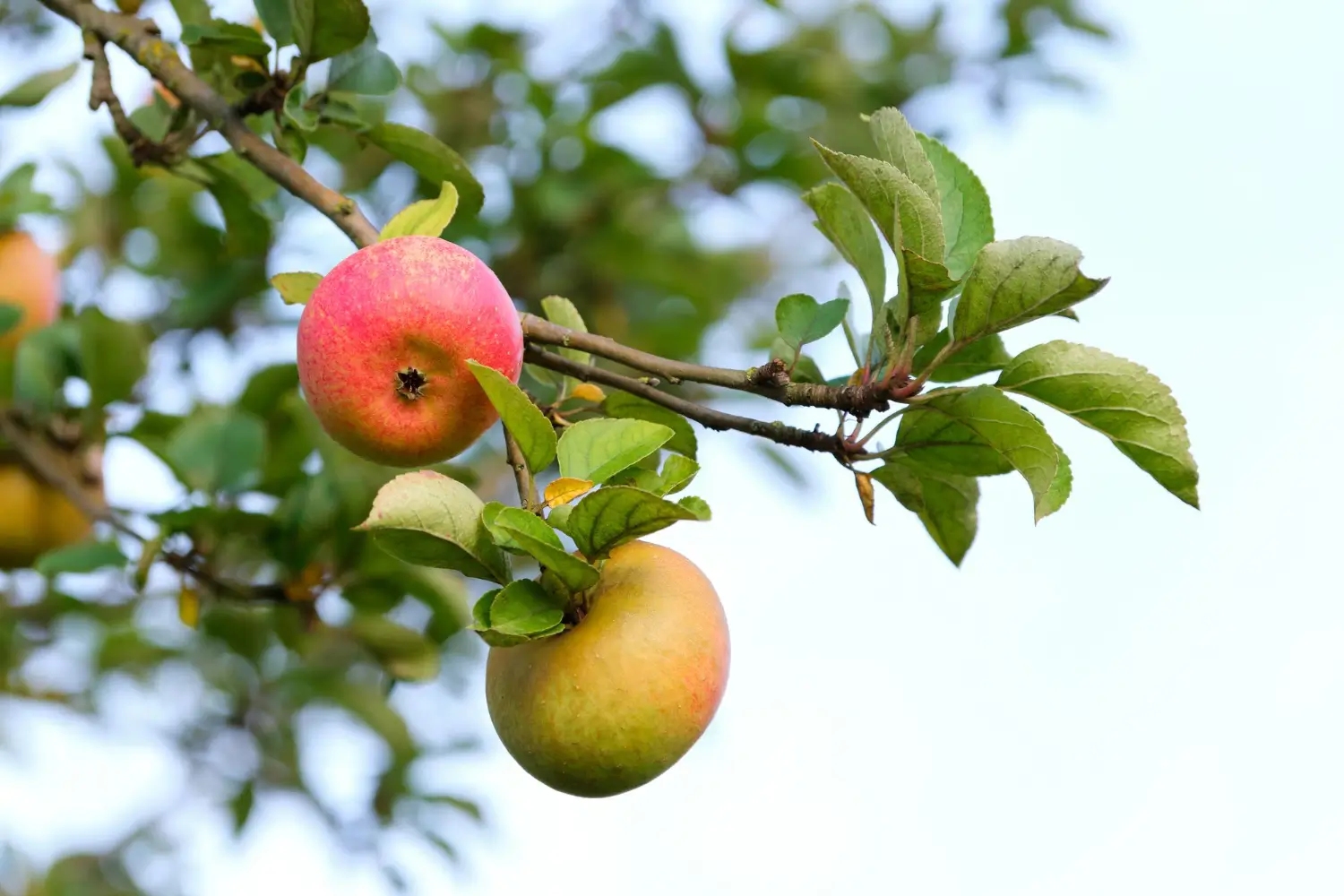
Soil Health & Fertilization
We unite suppliers and green industry professionals worldwide
Oak Mistletoe (Phoradendron leucarpum) is a semi-parasitic plant known as much for its role in nature as it is for its place in holiday traditions. It’s admired for its evergreen foliage but misunderstood because of its unusual growing habits.
By Mariam Scott
|Published on June 12, 2025


“What if a plant could thrive without roots in soil, growing high above, feeding off trees and still producing berries?”
That’s the peculiar enchantment of Oak Mistletoe (Phoradendron leucarpum),a semi-parasitic plant known as much for its role in nature as it is for its place in holiday traditions. Frequently seen growing in the upper branches of oak trees throughout North America, it’s admired for its evergreen foliage but misunderstood because of its unusual growing habits.
Oak Mistletoe isn’t something that grows in gardens in the traditional sense, but if you find it on your property, knowing how to manage it and its effects on the health of the tree and the ecology of the area is important. Plus, for those interested in native plants and wildlife gardening, this one offers fascinating insights and unexpected benefits.
| Common Name | Oak Mistletoe |
| Botanical Name | Phoradendron leucarpum |
| Type | Hemiparasitic evergreen |
| Height/Spread | Grows in clusters, often 2–5 feet across |
| Sunlight | Full to partial sun (depending on host tree location) |
| Soil | Grows on tree branches—no soil required |
| Watering | Absorbs water from host tree |
| Toxicity | Berries are toxic to humans and pets |
| Hardiness Zones | USDA 6–11 |

September 25, 2025
9 minute read
September 24, 2025
9 minute read
September 23, 2025
10 minute read
September 22, 2025
9 minute read


Join as a seller and connect with thousands of B2B buyers nationwide!
Sign Up

African Iris
African Iris is a low maintenance, clump forming perennial with sword-like leaves and striking flowers that look similar to a mix between an iris and an orchid.

Early Harvest Apple Tree
For those who adore crispy, refreshing apples but can’t wait until fall, the Early Harvest Apple Tree is going to be your new best friend.

Early Girl Tomato
A Fast-Growing Favorite That Delivers Tomatoes Before Anyone Else

False Indigo
Native Beauty That Brings Pollinators and Color to Your Garden
Caring for Oak Mistletoe isn’t so much about planting or watering—it’s more of observation and control. Since it anchors itself in the branches of hardwoods like oaks, elms, and maples, its growth affects the host tree.
While not always harmful, large infestations can weaken limbs over time. Gardeners or property owners with infected trees should balance aesthetics, wildlife interest, and tree health when deciding whether to remove mistletoe.
Oak Mistletoe prefers the upper branches of trees, where they get abundant sunlight. Like the majority of evergreen mistletoe species, it needs some photosynthesis to generate its own energy, so bright, indirect light from above is essential to its survival. It almost never grows well in dense shade or lower tree canopies.
This plant doesn’t actually root in soil at all. Instead, it inserts specialized structures called haustoria into the vascular system of its host tree to draw water and nutrients. So, it does not depend on soil conditions for its growth.
Oak Mistletoe does not require any type of watering as it absorbs water directly from the host tree. But the condition of the host tree does have an impact — stressed or drought-stricken trees can suffer more if mistletoe is present.
To manage this:
Pruning is the main control for Oak Mistletoe. If the plant is visible on your tree, prune it, cutting off the branch at least 12 inches below the point of attachment. Surface removal isn’t enough—the haustoria embedded in the roots have to be addressed too, otherwise it will grow back. The best time for pruning is in winter, when mistletoe is most visible.
If you are dealing with heavy infestations on mature trees, consult an arborist to avoid compromising the tree’s structure. Occasional mistletoe, especially high in the canopy, may be left alone if it doesn’t pose a health risk to the tree.
The plant is parasitic, so it's not the one that can be propagated intentionally,but Oak Mistletoe does reproduce naturally through birds and mammals.
Intentional propagation is discouraged unless for ecological or research purposes. In controlled settings, researchers mimic bird droppings by pressing seeds onto branches of suitable host trees during winter.
Oak Mistletoe can not be grown in pots unlike most plants. It needs a living tree host to live. The plant’s roots don’t go down into soil; they grow into the tree’s vascular system. (Any attempt to grow it in containers will fail unless it's attached to a branch of a host plant.)
That said, it can be observed in landscape trees or managed in wildlife gardens where birds are encouraged to spread seeds naturally. If you’re fascinated by native parasitic plants, you can allow mistletoe to grow on sturdy trees in non-ornamental spaces where it won’t threaten other valuable plants.
Oak Mistletoe is evergreen, making it easy to spot in winter when host trees have lost their leaves. It is active year-round in its native range and does not need overwintering protection.
However, this visibility in winter is what traditionally led to its harvest for seasonal decor. If you harvest mistletoe for winter holiday use, take care not to injure the host tree unnecessarily.
Though subtle, Oak Mistletoe produces small, greenish flowers in late winter to early spring. It is typically pollinated by small insects. Only female plants produce the familiar white berries in autumn and winter, a vital food source for birds such as cedar waxwing and robins.
Though the flowers themselves are not showy, they serve an essential ecological purpose by sustaining pollinators and extending the reproductive cycle of this unusual plant.
Oak Mistletoe is rarely troubled by pests or diseases—it’s more likely to be the issue itself when it overwhelms a tree.
Monitor trees annually to catch early growth. Regular pruning and maintaining healthy trees provide the best long-term management strategies.
Oak Mistletoe is something a bit unusual in the mistletoe world and widely misunderstood by many gardeners, but it’s an interesting member of the forest and garden community. Whether you consider it a nuisance or a native wonder, its ability to survive without soil, sustain wildlife and add evergreen character to bare trees in winter makes it a plant worth knowing.
With careful observation and regular pruning, this semi-parasitic plant can be controlled—and even enjoyed—as a part of a healthy landscape.
It depends on the level of infestation. In moderate quantities, they are harmless, but heavy infestations can cause loss of vigor and dieback of limbs.
Not in the traditional sense—it needs a live host tree and is typically spread by birds.
Sure, they are toxic to humans and pets but harmless — and indeed beneficial — to many species of birds.
It thrives in sunlit treetops, which offer the light it needs for photosynthesis and easy access for birds that spread its seeds.

Soil Health & Fertilization
Victor Miller

Pest Identification & Prevention
Victor Miller

Lawn Care Tips & Maintenance
Victor Miller

Soil Health & Fertilization
Victor Miller

Smart Irrigation Systems
Victor Miller

Patios, Walkways & Driveways
Victor Miller

Soil Health & Fertilization
Victor Miller

Pest Identification & Prevention
Victor Miller
My Account
Our team is always here to help.
We are open Monday - Friday, 9:00 AM to 4:30 PM PST.